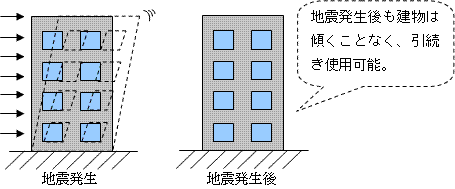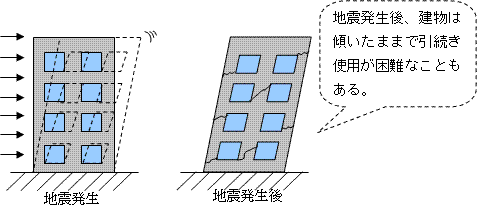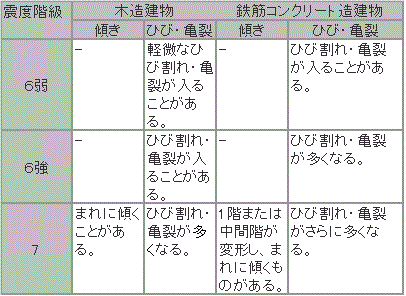The text is from here.
Relationship between Buildings and Earthquakes
Last updated on July 29, 2024.
Since the Great East Japan Earthquake, citizens have been interested in earthquakes, and we have received many inquiries about earthquakes, such as "How much earthquake our home can withstand?" In response to such inquiries, we will explain what the building is considering to confirm structural safety. The explanation here is for buildings that have been started since the enforcement of the new seismic standards.
※The Building Standards Law was revised on June 1, 1981, and the seismic standards changed. . This new standard is called the new seismic standard. Buildings started on or after June 1, 1981 are considered to be buildings designed according to this new seismic standard. The new seismic standards have been newly introduced with the concept of secondary design described below, and are based on the assumption of large-scale earthquakes in addition to medium-scale earthquakes. Also, technically, regulations on seismic force and wall volume of wooden buildings have been strengthened.
What is the structure of a building against an earthquake?
The structure of the building is divided into the following two stages, and we are examining that it is safe against earthquakes.
Primary design
The design aims to minimize damage to structures such as columns and beams against medium-scale earthquakes that are encountered several times during the useful life of the building.
This design aims to secure human life and continue to use the building.
Secondary design
The design is designed to prevent collapse or collapse even if damage is caused to the building against a large-scale earthquake that occurs very rarely once encountered during the useful life of a building.
The goal of this design is to secure human life, and the building may be damaged, tilted, and cannot be used continuously. This is an idea introduced in the new seismic standards.
What are medium-scale earthquakes and large-scale earthquakes?
As mentioned above, the structural examination of buildings is conducted for medium-scale and large-scale earthquakes. A medium-scale earthquake is assumed to be a seismic intensity of about 5 or more, and a large-scale earthquake is assumed to be an earthquake with a seismic intensity of about 6 to 7.
However, the Building Standards Law does not specify the relationship between the magnitude of the earthquake, such as "medium-scale earthquakes with seismic intensity 5 or more and large-scale earthquakes with seismic intensity 6 to 7" and seismic intensity. Therefore, it is not possible to clearly state how much earthquake a building built in accordance with the Building Standards Law can withstand, but it is used as a guide based on past earthquake data and research.
What was the damage to buildings that were actually affected by the earthquake?
Based on the damage caused by the recent earthquake, the assumed damage situation was divided into wooden and reinforced concrete buildings. However, even if seismic intensity is the same, damage situation will change depending on the structure of the building and the ground where the building is built. Not all the damages listed in this table occur, and depending on the condition of the building, the damage may increase or decrease.

(Reference: JMA seismic intensity class commentary table)
Wooden cracks and cracks are earthen walls (cut bamboo base) and mortar finish.
It is assumed that cracks and cracks on walls (includinglas and wire mesh base) are assumed.
Inquiries to this page
Housing and Architecture Bureau Building Guidance Department, Building Guidance Division
Phone: 045-671-4536
Phone: 045-671-4536
Fax: 045-681-2437
E-Mail address [email protected]
Page ID: 652-100-846







